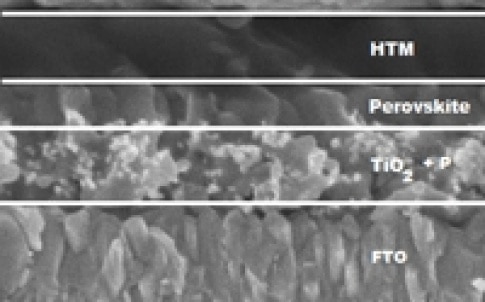Lead halide perovskites have recently attracted interest because solar cells based on these semiconductors demonstrate very high conversion efficiencies and a cell voltage of more than 1V.
However, it is not entirely clear how they work and a better understanding of their functioning mechanisms would help improve them, or lead to novel technologies with increased efficiency.
The groups of Michael Grätzel and Jaques E. Moser at EPFL, working with the Institute for Solar Fuels in Berlin, have used time-resolved spectroscopy techniques to determine how charges move across perovskite surfaces. The results are published in Nature Photonics.
The researchers worked on various cell architectures, using either semiconducting titanium dioxide or insulating aluminium trioxide films.
Both porous films were impregnated with lead iodide perovskite (CH3NH3PbI3) and an organic “hole-transporting material”, which helps extract positive charges following light absorption. The time-resolved techniques included ultrafast laser spectroscopy and microwave photoconductivity.

The results are said to have showed two main dynamics. First, that charge separation, the flow of electrical charges after sunlight reaches the perovskite light-absorber, takes place through electron transfer at both junctions with titanium dioxide and the hole-transporting material on a sub-picosecond timescale.
Secondly, the researchers found that charge recombination - wasting the converted energy into heat, reducing the overall efficiency of the solar cell - was significantly slower for titanium oxide films rather than aluminium ones.
The authors said in a statement that lead halide perovskites constitute unique semiconductor materials in solar cells, allowing ultrafast transfer of electrons and positive charges at two junctions simultaneously and transporting both types of charge carriers quite efficiently. In addition, their findings show a clear advantage of the architecture based on titanium dioxide films and hole-transporting materials.




Nanogenerator consumes CO2 to generate electricity
Nice to see my my views being backed up by no less a figure than Sabine Hossenfelder https://youtu.be/QoJzs4fA4fo